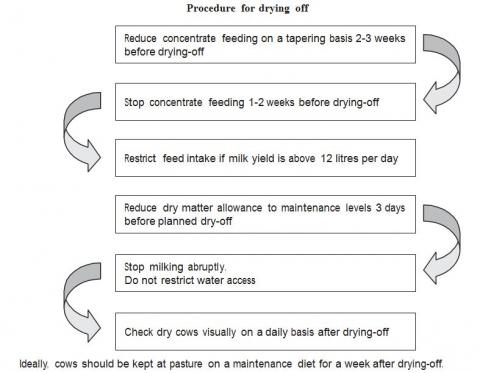The dry period is the most important phase of a dairy cow’s lactation cycle. For optimal animal health and best performance in the next lactation, lactating animals should have an opportunity to rest and regenerate mammary tissue between lactations. During this phase, the cow and her udder prepares for the next lactation; hence any abnormalities during the dry period will have a negative effect on the cow’s health and milk production after calving.
Due to the amount of milk they produce, the drying-off process is often more complicated for dairy animals. Preparation for dry off should begin at least two weeks prior to the dry-off date with a significant change in the animal’s diet. Reducing the energy content of the diet and feeding primarily a high-fiber diet will reduce the nutrients available for the animal to make milk; this is often all that is needed to reduce milk production to a level that makes dry off safe and simple.
Length of Dry Period
Animals should be dry for around 60 days. If animals have prolonged dry periods, they run the risk of becoming obese, experiencing obesity-related diseases and having difficulty in calving.

